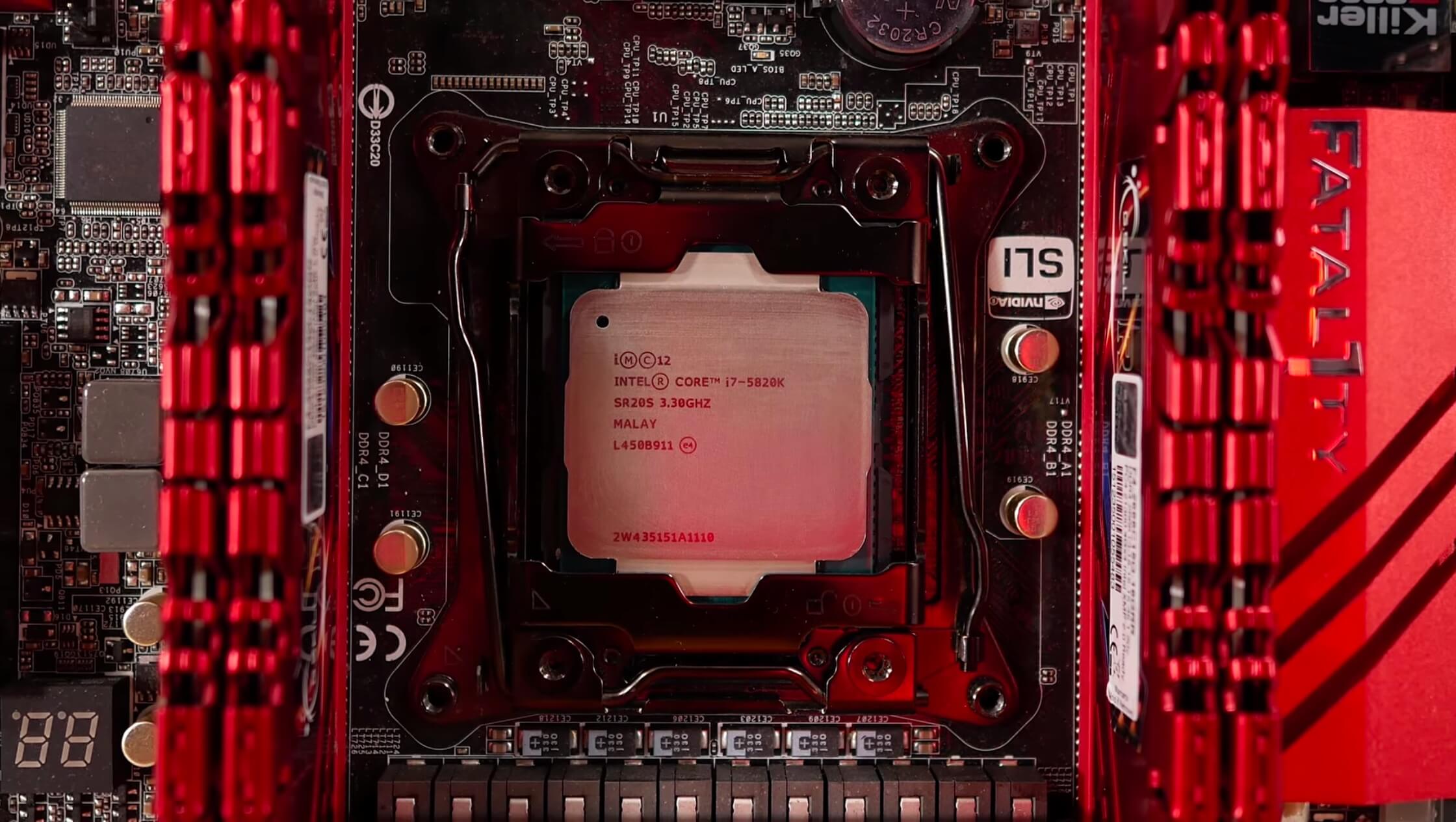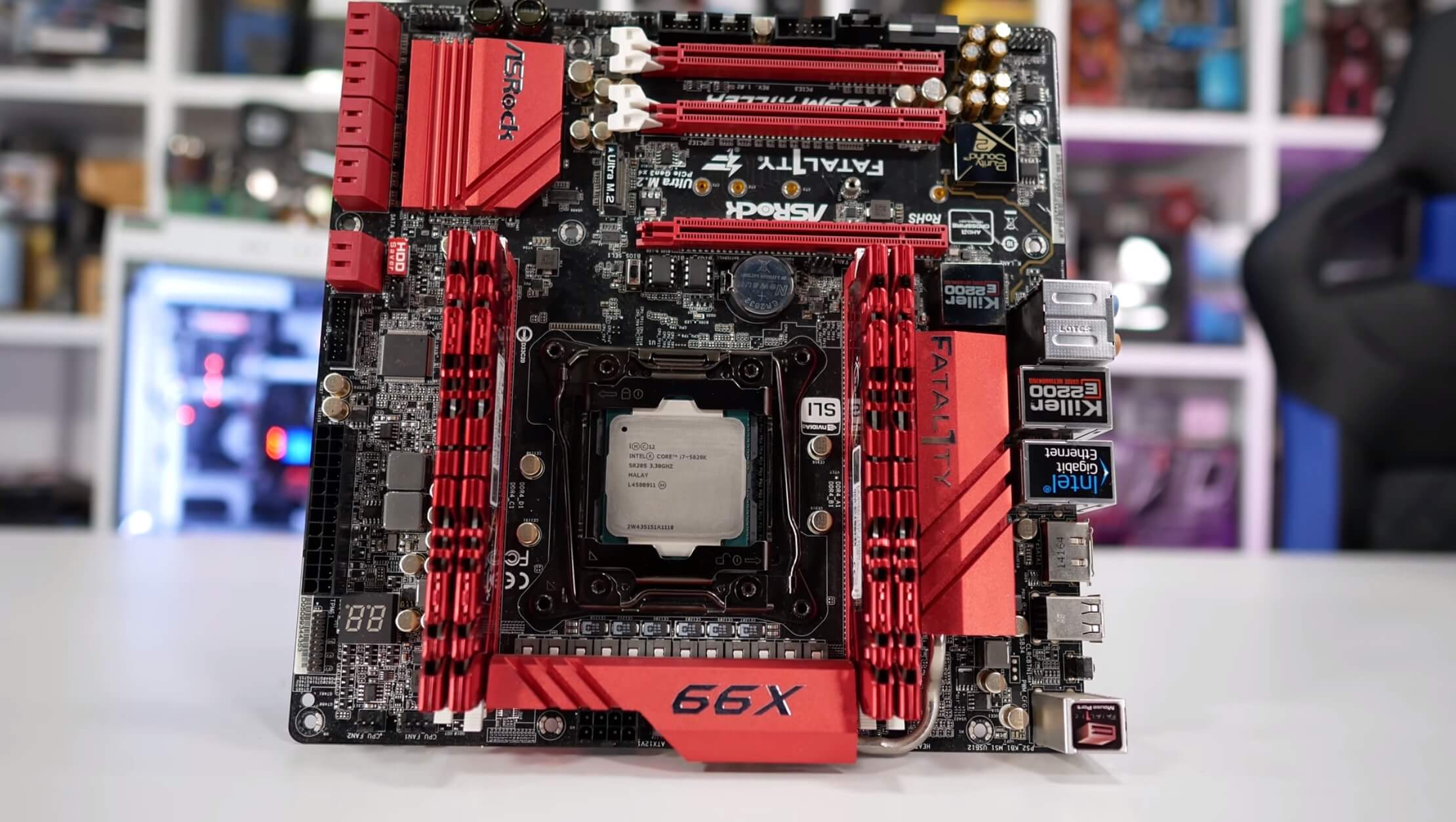Released in August 2014 for a reasonable $390 – the most affordable Haswell-E processor available at the time – Intel's hexa-core Core i7-5820K has proven popular among enthusiast builders over the years and it's about time we see how it compares against more modern CPUs.
Today, the chip can be purchased for nearly half the price it originally fetched and we managed to find one online for around $200, which seems to be about the going price.
By default, the 5820K works at a base frequency of 3.3GHz but depending on the workload it can boost up to 3.6GHz (a mild increase, admittedly) and it also packs 15MB of L3 cache alongside 1.5MB of L2 cache, which was a significant increase over the mainstream Core i7 range back in 2014.
Although the chip is pin-compatible with the previous-generation Ivy Bridge-E and Sandy Bridge-E boards, we got an upgraded socket, LGA2011v3. The socket change was somewhat justified this time seeing as Haswell-E saw the adoption of DDR4 memory on Intel's high-end desktop platform. As was the case with previous generations, quad-channel memory support remained and the official spec called for DDR4-2133.
Since the release of the 5820K, we saw the 6800K jack this category's price up to well over $400 and then last year the 7800X went back down to $390. Of course, 2017 also brought the Ryzen 5 1600 for $200 and the 8 core/16 thread R7 1700 which can be had for $290. Intel's high-end desktop platform actually faced some real competition in 2017, something it's never really seen.
Our focus will be on gaming for this retest and the aim is to accomplish two things: 1) to show those of you currently using a 5820K what advantages there may be to upgrading, and 2) to provide second-hand shoppers with information on whether the 5820K and an accompanying X99 motherboard are worth snapping up – $200 for the 5820K plus $80-$100 for a supporting motherboard looks like a great value on paper.
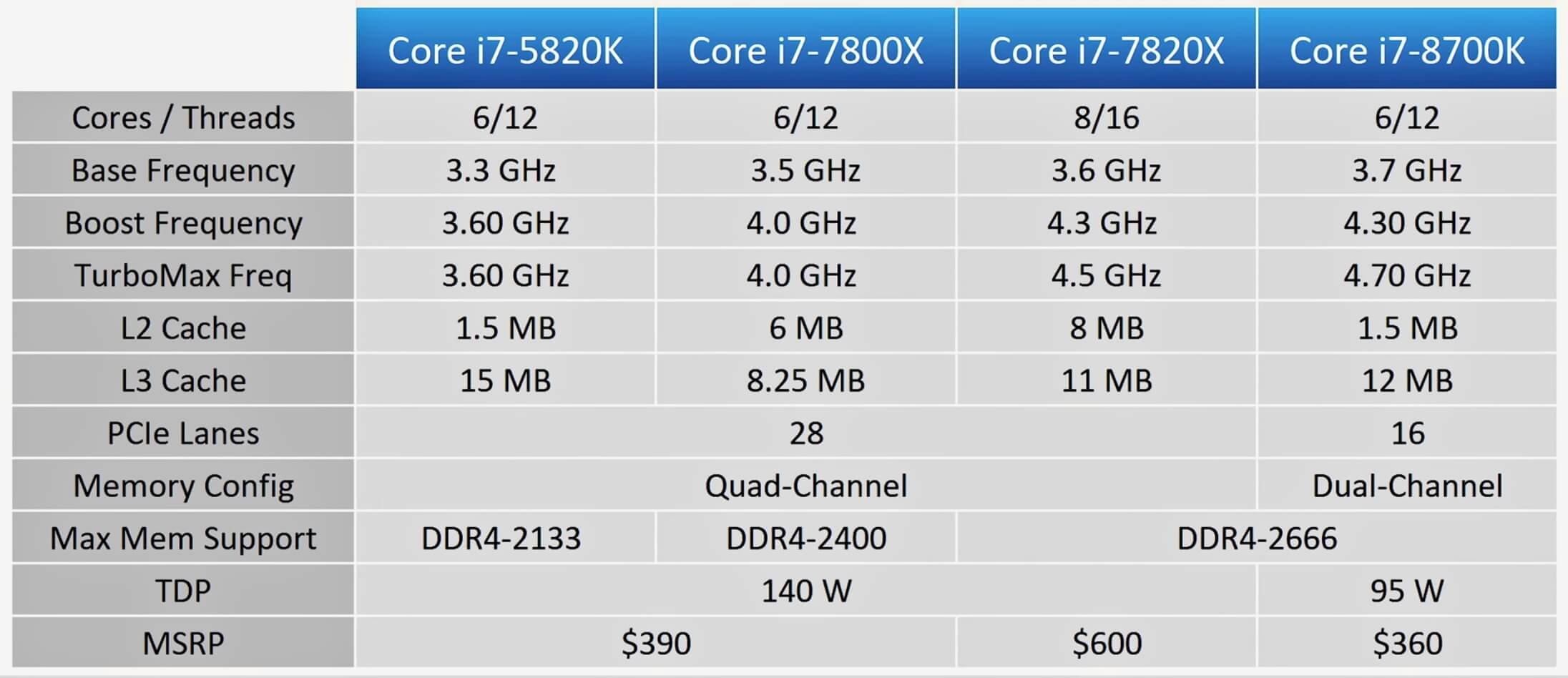
What we can say upfront is that if you're mostly gaming on the 5820K right now, it's probably not worth jumping ship for the 8700K and it makes more sense to wait given what we saw from our recent retest of the Haswell-based 4770K.
Clock for clock, at 4.8GHz the 4770K was just 15% slower at 1080p using medium quality settings with a GeForce GTX 1080 Ti. On maximum quality, that margin was reduced to just 10% which fell further to 4% when increasing the GPU workload to 1440p.
Although we don't expect to find much difference with the 5820K, you guys still love benchmark results and so do we, so we won't let that little fact stop us. For testing, we paired the 5820K with quad-channel DDR4-2666 memory and that's the highest memory speed our processor would work with, at least with the sticks we have available. The 4770K was tested with DDR3-2400 memory and the 8700K with DDR4-3200 memory.
Before we get to the gaming results, we have some Cinebench R15 scores along with some Corona benchmarks and power consumption figures.
Benchmarks
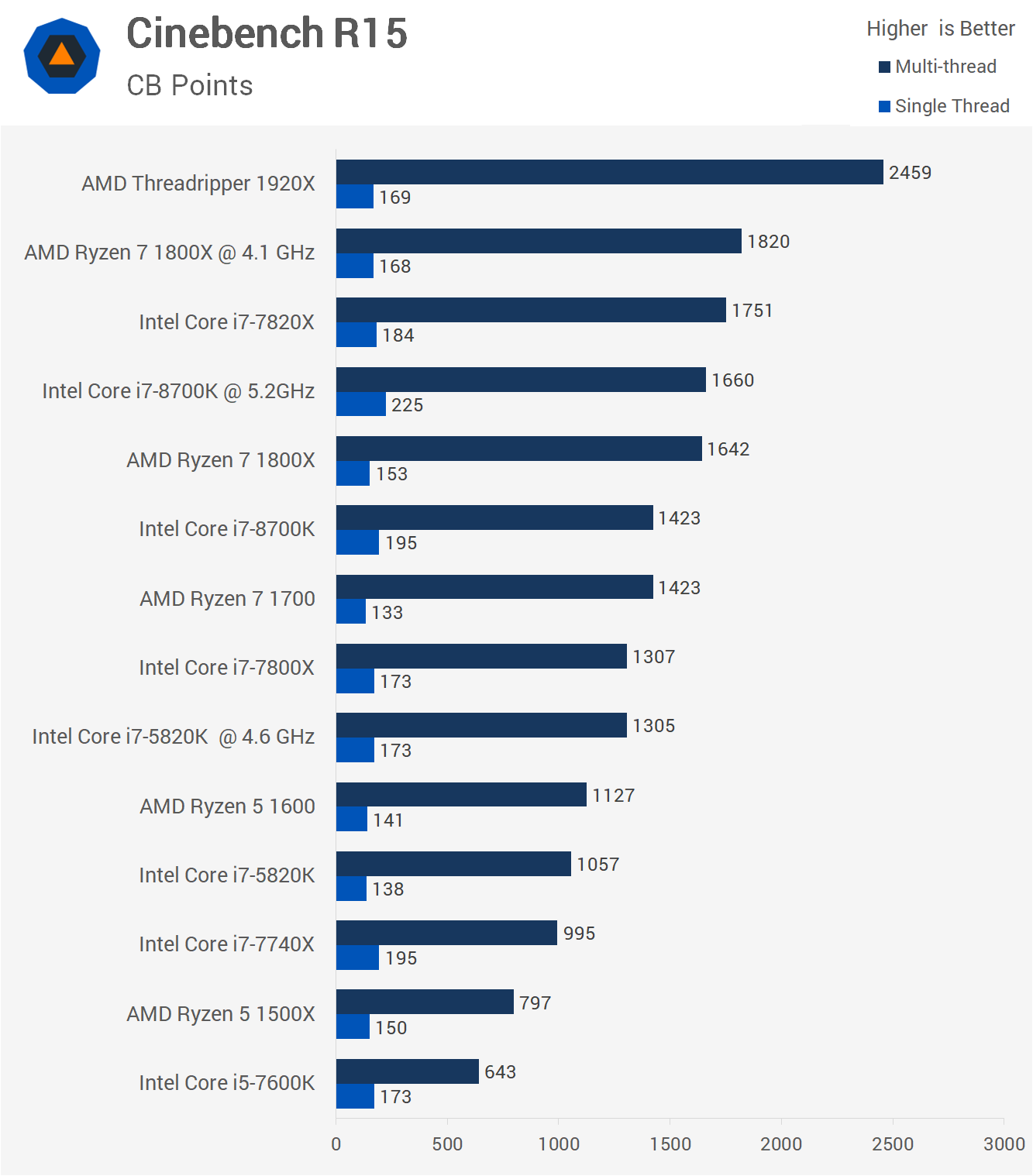
First up, a quick look at everyone's favorite rendering benchmark, Cinebench R15. Here the stock 5820K scored 6% lower than that of the R5 1600 and the Ryzen CPU posted a better single thread result as well. Overall though, they weren't drastically different. Once overclocked, the 5820K hit 1305 pts and that placed it on par with the stock 7800X and a whopping 21% behind the overclocked 8700K.
If you're wanting to increase productivity, the 8700K will offer noticeable gains, though you are better off with a Skylake-X processor such as the 7820X or perhaps a Ryzen 7 CPU.
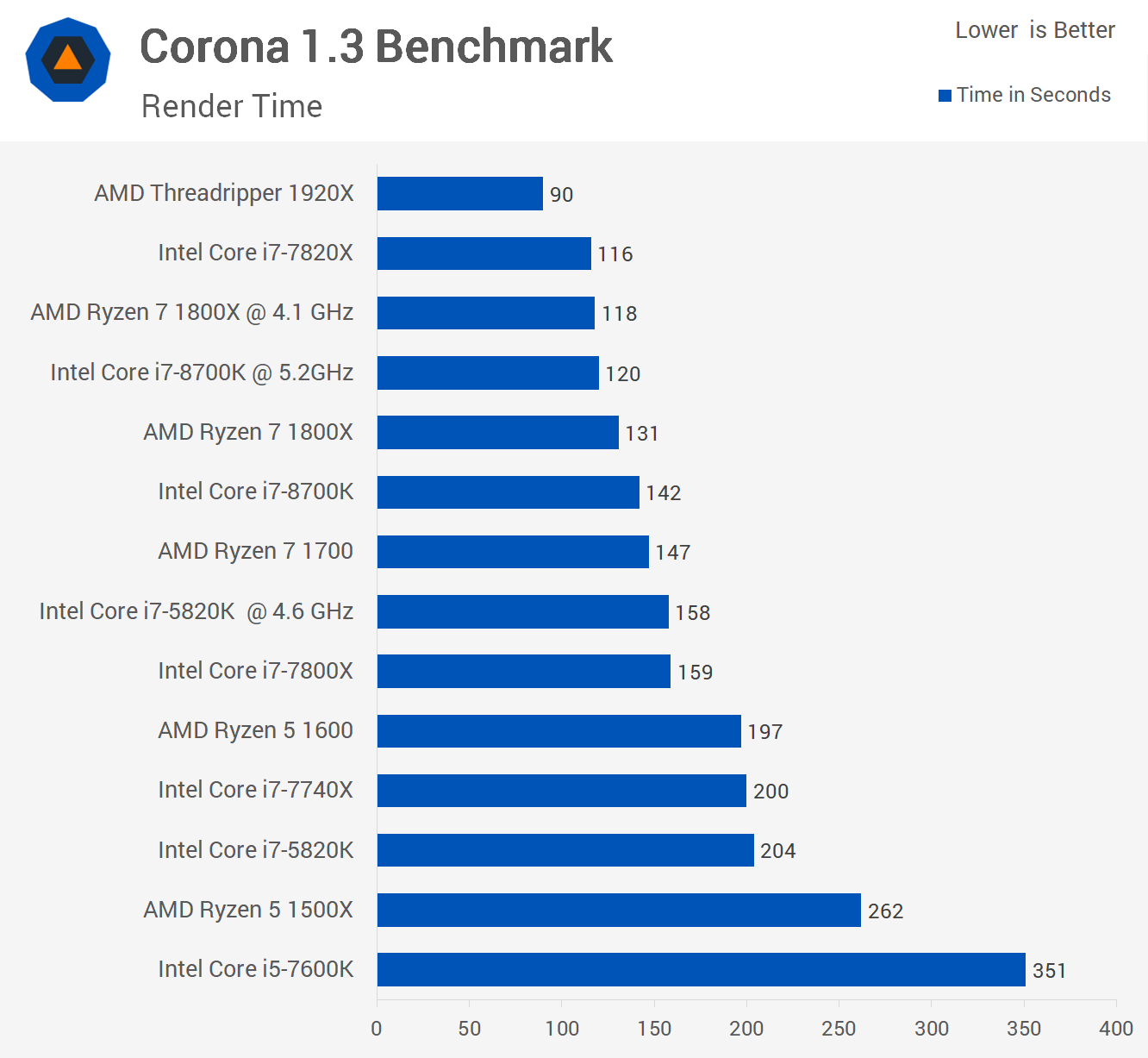
Here's a look at the Corona results and we see that the 5820K is again only able to match the 7800X once overclocked, although in this test it does pull well ahead of the Ryzen 5 1600 and almost catches the R7 1700. Still, even overclocked the 5820K was 10% slower than the stock 8700K and 24% slower once the 8th gen processor is overclocked.

Lastly, before jumping into the gaming results here's a quick look at power consumption. At stock, the 5820K consumes slightly more power than the 8700K and 12-core/24-thread Threadripper 1920X, but less than the 7800X. Once overclocked, the aging chip consumed the same 270 watts as the 5.2GHz 8700K, so nothing too extreme but at 4.6GHz the 5820K starts to get quite power hungry.
